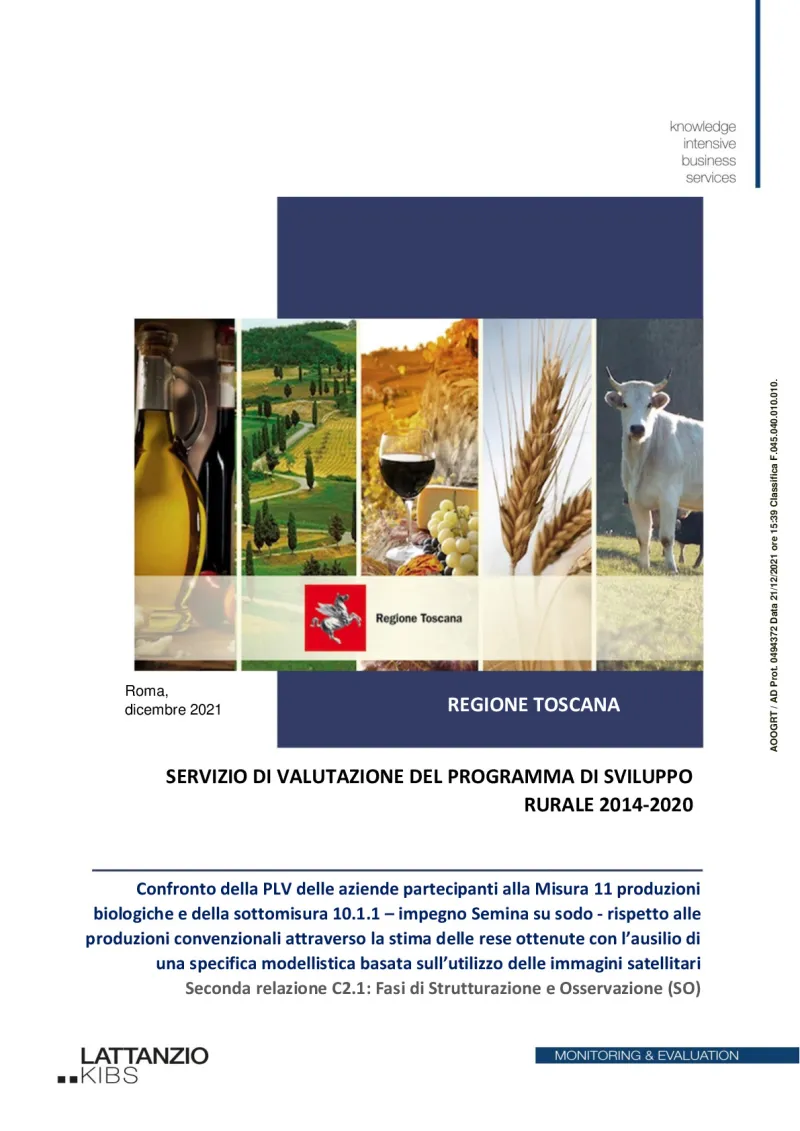Comparison of organic and conventional production companies
The interim report focuses on the comparison between the impact of organic farming and conservation agriculture techniques in Tuscany.
- Italy
- 2014-2022
- Environmental impacts

This is an interim evaluation report under the 2014-2020 Rural Development Programme (RDP). It focuses on the impact of organic farming and conservation agriculture techniques, particularly no-till sowing, compared to conventional methods in the Val d’Orcia area, Tuscany, Italy. The analysis covers data up to the end of 2018 and includes additional data collection in 2021.
The evaluation aims to assess the economic sustainability and environmental benefits of the Measure 11 'Conversion to or maintenance of organic farming' and sub-Measure 10.1.1 'Soil and organic matter conservation – no-till sowing'. It addresses the rural development Priority Area 'Restoring, preserving and enhancing ecosystems related to agriculture and forestry', focusing on the monetisation of positive externalities such as greenhouse gas emission reductions and soil carbon sequestration. The evaluation assesses effectiveness, relevance and EU value added, targeting the Specific Objectives (SOs) of the CAP, including SO5 (preserve ecosystems) and SO6 (resource efficiency and climate resilience). The geographic focus is the Tuscany region.
A mixed-methods approach was employed, combining satellite data analysis (utilising the Tethys system, which incorporates SEBAL and AquaCrop models) with direct interviews, focus groups, and secondary price data from ISMEA. Techniques included counterfactual analysis through pairwise comparison of parcels, a survey of 15 farms, and interviews with five experts. The main data sources comprised satellite imagery, meteorological data, pedological maps, administrative data from ARTEA and agricultural price statistics. Indicators used included yield, gross marketable output (PLV), price differentials, and ecosystem service valuation in euros per tonne of CO₂ equivalent.
Evaluation elements included structured evaluation questions, judgment criteria and triangulated data collection instruments.
Limitations emerged in accessing detailed parcel-level data and in accurately measuring specific yields due to climatic events or data gaps. Satellite data acquisition was occasionally obstructed by cloud cover, but this was mitigated through multi-sensor strategies. Difficulties also arose in pricing analysis, particularly for organic products, due to limited local market data.
Overall, the findings reveal that organic and conservation practices generally produce lower yields than conventional methods, but offer higher prices, partially offsetting the productivity gaps. Notably, in some cases, organic methods underperformed even in price returns. The evaluation recommends refining payment schemes to better capture the value of ecosystem services and enhance environmental targeting, while suggesting further research on soil carbon dynamics and economic thresholds for sustainable adoption.
Author(s)
Lattanzio KIBS